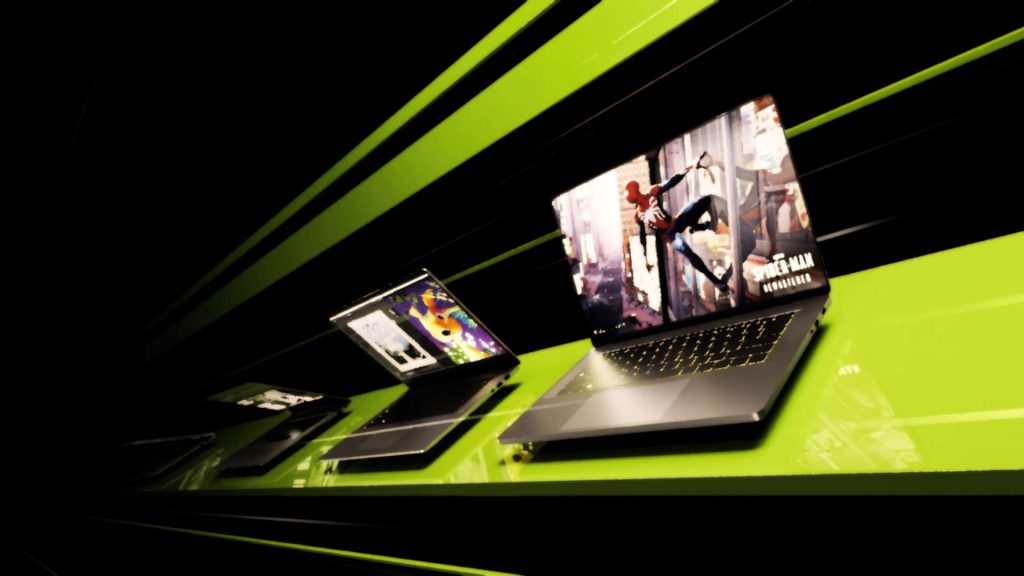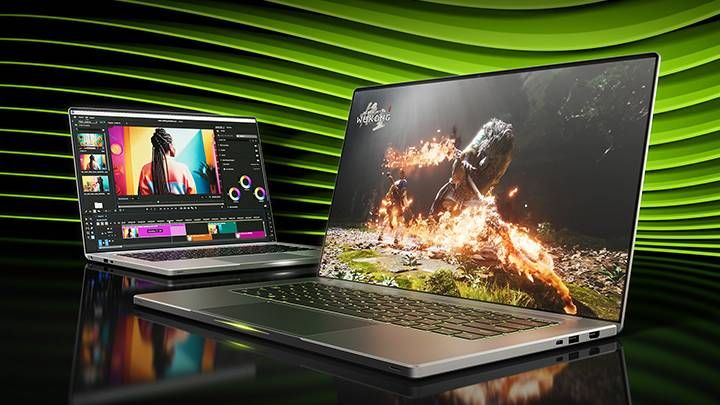The battle for mobile GPU supremacy in 2025 is heating up with the introduction of two graphics giants: AMD’s Radeon RX 8950M and NVIDIA’s RTX 5090M. The GPUs cram desktop-class performance in the palm of your hand and are poised to revolutionize what’s possible on laptops for gaming, AI workloads, and content creation.
In this ultimate showdown, we compare these two giants on the most critical factors of performance, thermals, efficiency, driver support, and price-to-performance. Whether you are a gamer, 3D artist, or machine learning enthusiast, this guide will make it simpler to decide which GPU to obtain in your next laptop upgrade.
Specs Overview – RTX 5090M vs Radeon 8950M
Feature NVIDIA RTX 5090M AMD Radeon RX 8950M
Architecture Ada Lovelace Refresh RDNA 4
CUDA / Stream Processors 16,384 CUDA cores 9,216 Stream processors
VRAM\t24GB GDDR7\t20GB GDDR6
Ray Tracing Cores\t3rd Gen RT Cores\t3rd Gen Ray Accelerators
AI Acceleration\t5th Gen Tensor Cores\tXDNA AI Matrix Engines
Max TGP (Laptop Config)\tUp to 175W\tUp to 165W
PCIe Support\tPCIe 5.0\tPCIe 5.0
DLSS / FSR\tDLSS 4.0\tFSR 4.1
Gaming PerformanceBoth GPUs offer extreme gaming performance in thin and light or performance-oriented gaming laptops.
✅ RTX 5090M:
Powers 4K gaming at ultra settings easily with high frame rates
DLSS 4.0 with Frame Generation 2.0 allows for smooth experiences even in AAA titles
Note-level ray tracing performance, with Path Tracing better than ever
✅ Radeon 8950M:
Competitive performance in 1440p and 4K gaming
FSR 4.1 closes the gap with DLSS, but without Frame Generation equivalence
Improved raw rasterization performance in some titles (particularly Vulkan and AMD-optimized engines)
Verdict:
RTX 5090M leads in ray tracing, DLSS-enabled games, and future-proofing. Radeon 8950M offers incredible traditional gaming and enhanced performance-per-watt in some games.
Content Creation & Professional WorkloadsFor content creators, video editors, 3D artists, GPU acceleration is paramount.
RTX 5090M Strengths:
CUDA cores accelerate Adobe Premiere Pro, Blender, DaVinci Resolve
Improved performance in OctaneRender, Redshift, and AI denoising applications
Great integration with NVIDIA Studio drivers
Radeon 8950M Strengths:
Great performance in OpenCL-based applications
RDNA 4 improvements support DaVinci Resolve rendering and color grading
Slightly better thermals in render workloads via more accurate power control
Verdict:
For creative professionals who utilize 3D and Adobe suites, the RTX 5090M is the more versatile overall GPU by way of targeted software support and CUDA cores.
AI & Machine Learning Acceleration2025 is a tipping point when laptops are also expected to run AI workloads, for example, model inference or LLM acceleration.
RTX 5090M has 5th-gen Tensor cores, speeding up PyTorch, TensorFlow, and ONNX-based models by a big margin
Runs seamlessly with CUDA, cuDNN, and TensorRT
Integrated into NVIDIA’s AI Workbench and pre-trained models for developers
Radeon 8950M, powered by XDNA Matrix Engines, offers on-device AI acceleration
Ideal for AI-powered content features like Adobe’s neural filters, but lacking general developer toolchain support
Verdict:
For AI development, NVIDIA’s ecosystem and Tensor cores give the RTX 5090M a substantial advantage.
Thermals & EfficiencyBoth GPUs push the limits of mobile performance, but cooling and efficiency matter greatly in compact form factors of ultrabooks/gaming laptops.
RTX 5090M at 175W will become hot and loud under sustained loads, though vapor chamber cooling helps
Newer laptops like Razer Blade 18 and ASUS ROG Strix 2025 manage heat effectively
Radeon 8950M is more power-efficient in real-world gaming workloads and runs at slightly lower temperatures
SmartShift MAX helps balance CPU/GPU power based on load
Verdict:
Radeon 8950M laptops are quieter and cooler, while RTX 5090M requires aggressive cooling for maximum performance.
Pricing & AvailabilityRTX 5090M laptops start at $2,999 and go up to $4,500+ in top-of-the-line laptops
Radeon 8950M laptops are less expensive, starting at approximately $2,499, making them attractive to gamers and creators on a budget
Verdict:
If you want the best of the best and can pay for it, go RTX 5090M. If you prefer value without giving up much, Radeon 8950M is difficult to beat.
Final Verdict – Which GPU Wins?
Category Winner
4K Gaming RTX 5090M
Ray Tracing RTX 5090M
Rasterization Radeon 8950M
Content Creation RTX 5090M
AI Acceleration RTX 5090M
Thermals & Efficiency Radeon 8950M
Value for Money Radeon 8950M
The RTX 5090M is the undisputed champion of 2025 laptop GPUs, especially for creators, gamers, and AI developers in need of peak horsepower. The Radeon RX 8950M, though, punches above its weight with excellent power efficiency, decent gaming performance, and a lower price point.
Choose RTX 5090M if you:
Use AI or CUDA-accelerated apps
Demand best-in-class ray tracing and content creation capabilities
Require future-proofing for 4K+ gaming and creation workloads
Choose Radeon 8950M if you:
Prioritize quieter, cooler laptops
Require great 1440p/4K gaming on a budget
Prefer AMD’s SmartShift and FSR ecosystem



